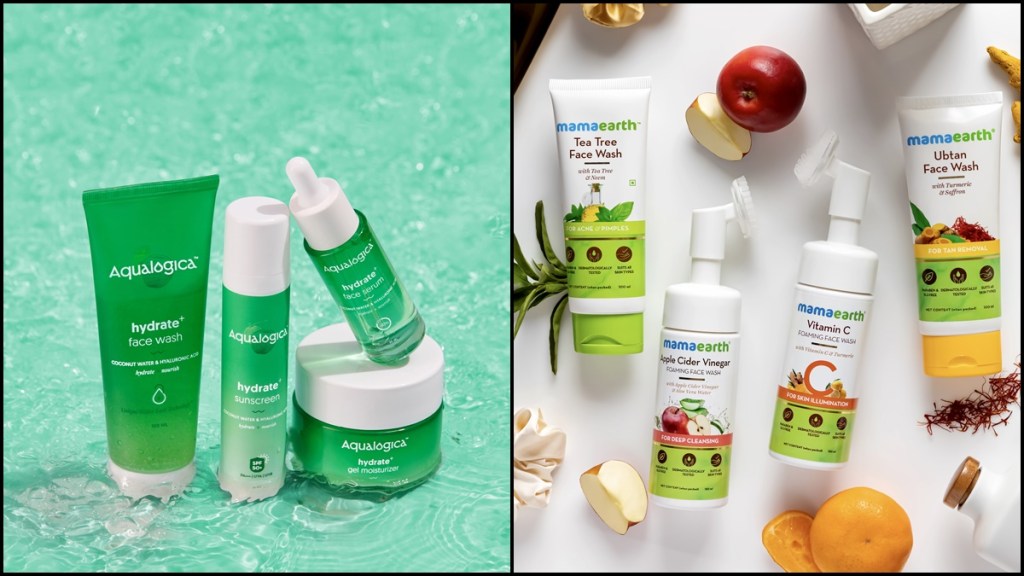Honasa Consumer, the parent company of Mamaearth and The Derma Co., is in the midst of scaling up. The company is betting big on the content-to-commerce strategy with its recent acquisition of Momspresso. The company plans to use the $52 million raised in the latest round of funding in making further acquisitions and new launches, in a bid to become a ‘house of brands’ in the beauty and personal care segment.
According to a RedSeer report, the beauty and personal care market, which stood at $16 billion in 2020, is expected to reach $28 billion by 2025.
Building the brand
Honasa Consumer acquired content platform Momspresso and its associated influencer-engagement platform Momspresso MyMoney in December, 2021. Momspresso and MyMoney, together, host around 60,000 content creators in 10 languages, micro influencers, and a community of 30 million women. Varun Alagh, co-founder and CEO, Honasa Consumer, believes that content-to-commerce is “a very critical investment” in setting the brand and product story. “Nowadays, consumers search about a problem on the internet and consume a piece of content on that problem; and then that content leads to the discovery of a product.” The company’s target consumers are digital-savvy millennials.
In November last year, the company also launched Aqualogica, a hydration-based skincare brand — a range of face wash, serum, gel moisturiser and sunscreen — suited for “Indian skin types and weather conditions”. It also entered the colour cosmetics category in October, 2021, offering products like liquid lipsticks, bullet lipsticks, kajal and lip balms.
Thirty percent of the company’s total revenue comes from offline channels. Last year, Honasa Consumer had launched exclusive brand outlets (EBOs) of Mamaearth; The Derma Co. will soon start retailing offline. Currently, there are seven outlets of Mamaearth across Delhi-NCR and Chandigarh, but the company is cautious about adding more. “Offline expansion comes with its own challenges. There is a high dependency on distributors for primary and secondary offtake, with limited control on the shop floor. A brand can show its entire product portfolio on its own website, but offline, the challenge is to pick the SKUs we would like to display; this limits the options for consumers, too,” Alagh says.
Honasa ventured into the international market by taking Mamaearth to Dubai in 2021. The brand retails across offline stores and e-commerce channels. Going forward, it plans to foray into the US, Europe and the GCC countries.
Alagh says the company’s revenue from operations “jumped fourfold to nearly Rs 461 crore in FY21, against Rs 109.7 crore in FY20”. In FY22, he is looking at doubling its revenue from last year.
Big picture
The content-to-commerce model is advantageous for D2C brands, as it helps stay close to consumers and understand their choices better. Ankur Pahwa, partner at EY, says that influencers can build brand salience, and in a far more effective way than if the company were to invest in buying shelf space in any of the offline stores or online marketplaces. “Buying or investing in these influencer platforms also reduces customer acquisition costs, and helps customer retention,” he adds.
However, since D2C companies operate largely within the e-commerce space, and have a limited presence in modern trade and kirana stores, their reach may be limited, says Nikhil Sethi, partner, business consulting, KPMG India. Hence, creating a house of brands within the D2C umbrella can help companies scale faster and cast a wider net by bringing in new consumers.
Analysts say that an offline presence is critical to enhance the brand experience, as most of these D2C brands are built around a concept — be it the novel ingredients used to create the product, or its layered application — which may not be easy to explain simplistically online. “Investing in R&D, product improvement, and monitoring profitability across brands and SKUs will be imperative for these brands to stay relevant in the long term,” Sethi adds.
The aspirational consumers in tier II and III cities, analysts say, present a big opportunity for these brands. “People in the small towns are willing to try new products; they want to break away from old brands, as they discover new-age brands and products via content on YouTube, Instagram, etc,” says Pahwa.
Read Also: The importance of ‘consumer connect’ in edtech marketing and communications


